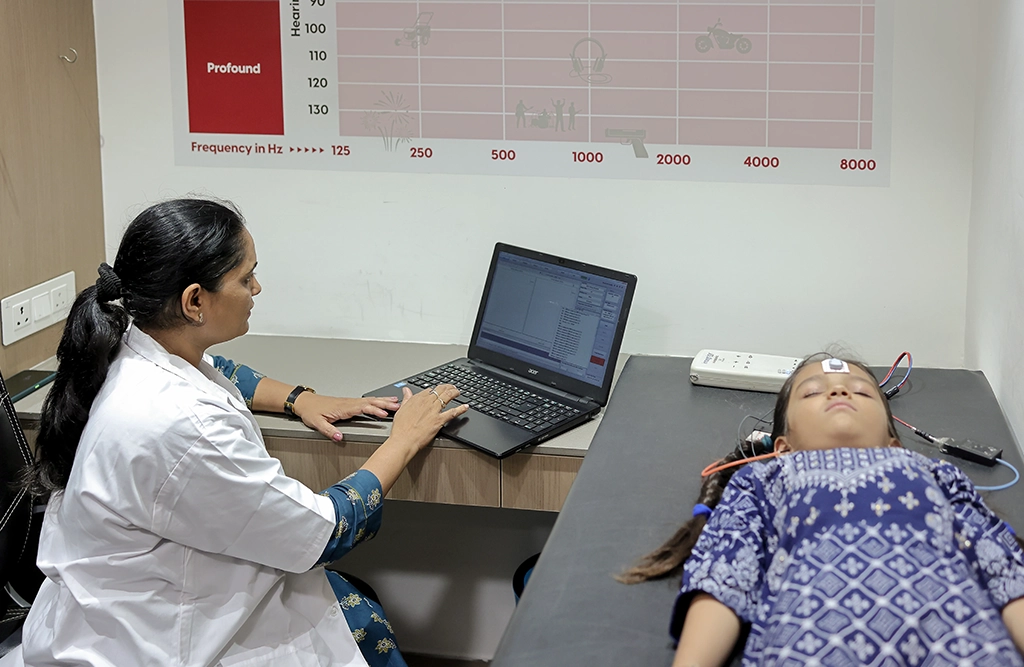
When kids need their hearing checked, they go through something called a pediatric audiological evaluation. It’s like a special check-up for their ears. The audiologist, who is like a hearing doctor, uses fun games and activities to see how well your child hears different sounds. They might play sounds and see how your child reacts, or they might ask them to point to pictures or repeat words. It’s all done to make sure your child’s ears are working just right, so they can hear well and do all the things they love!
Free field audiometry is a hearing test that helps check how well you can hear sounds without using headphones or earphones. Instead, you’ll listen to sounds in a special room called a “free field” where speakers are set up. During the test, you’ll hear different sounds at different volumes and frequencies, and you’ll indicate when you hear them. It’s a bit like playing a game of “spot the sound” in a room instead of through headphones. This test helps audiologists understand your hearing abilities in more natural listening situations.
Behavioral observation audiometry is a way to test the hearing of babies and young children who can’t give feedback verbally. Instead of asking questions or raising their hands, we watch how they react to different sounds. For example, we might see if they turn their head towards a sound or stop what they’re doing to listen. It’s like playing a game of “peek-a-boo” with sounds to see how well they can hear. This helps us understand if there are any hearing issues early on so we can give them the best care and support they need for healthy hearing as they grow.
Play audiometry is a fun way to check how well kids hear. Instead of just raising their hand or pressing a button when they hear a sound, they get to play games! During the test, they might listen for sounds and then drop a block in a bucket or put a puzzle piece together. It’s like a game that helps doctors understand if their ears are working okay. And the best part? Kids usually have a blast while getting checked!
Otoacoustic emissions are like tiny sounds made by your ears themselves! When your inner ear (cochlea) is working well, it produces these soft sounds in response to certain noises, almost like an echo. Audiologists can use special equipment to detect these emissions, which can help them check how well your inner ear is functioning. It’s like your ears are giving a little signal to show they’re working properly.